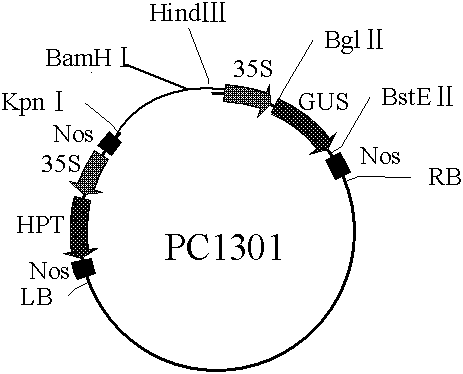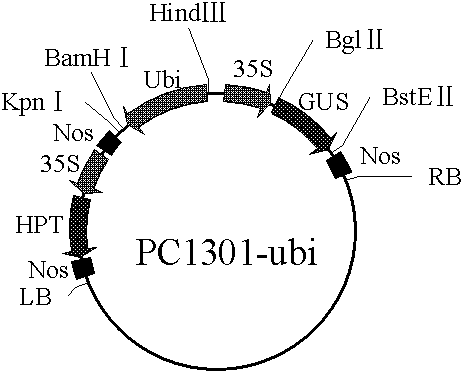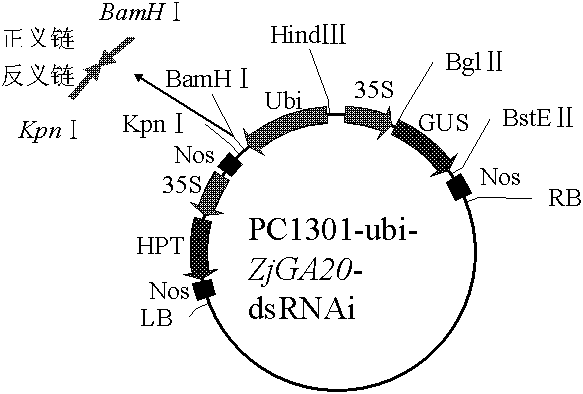Agrobacterium tumefaciens-mediated genetic transformation method of zoysia japonica
A genetic transformation method, Agrobacterium-mediated technology, applied in biochemical equipment and methods, botanical equipment and methods, applications, etc., can solve the problems of difficult application of genetic transformation of gramineous plants, to avoid waste, save costs, The effect of reducing workload
- Summary
- Abstract
- Description
- Claims
- Application Information
AI Technical Summary
Problems solved by technology
Method used
Image
Examples
Embodiment 1
[0026] Example 1 Agrobacterium-mediated screening of optimal conditions for Zoysia japonica genetic transformation system
[0027] 1 recipient plant material
[0028] Japanese Zoysia cultivar 'Zenith' mature seeds ('Zenith' cultivar seeds purchased from U.S. TMI company (TurfMerchants, Inc)) were soaked in sodium hypochlorite solution (purchased from Beijing Chemical Plant, >5% active chlorine, adding 1-2 drops In Tween 20), sterilize on a magnetic stirrer for 1 hour, rinse with sterile water 3-5 times, soak at 4°C for 3 days, then sterilize with sodium hypochlorite solution for 20 minutes, rinse with sterile water for 3 times, and use sterile filter paper Drain excess water, inoculate on callus induction medium, and induce callus at 28°C in the dark. The callus was subcultured once a month, and the white or yellow, granular callus was selected and transferred to the subculture medium for culture as the recipient material for gene transformation.
[0029] 2 strains and vecto...
Embodiment 2
[0072] Example 2 Agrobacterium-mediated transfer of RNA interference (RNAi) plant expression vector pc1301-ubi-ZjGA20-dsRNAi into Zoysia japonica to obtain transgenic plants
[0073] 1 recipient plant material
[0074] Mature seeds of Japanese Zoysia cultivar 'Zenith' were soaked in sodium hypochlorite solution (purchased from Beijing Chemical Plant, >5% active chlorine, added 1-2 drops of Tween 20), sterilized on a magnetic stirrer for 1 hour, and sterile Rinse with water 3-5 times, soak at 4°C for 3 days, sterilize the soaked seeds with sodium hypochlorite solution for 20 minutes, rinse with sterile water for 3 times, blot excess water with sterile filter paper, and inoculate on callus induction medium , callus was induced at 28°C in the dark. The callus was subcultured once a month, and the white or yellow, granular callus was selected and transferred to the subculture medium for culture as the recipient material for gene transformation.
[0075] 2 strains and vectors
...
PUM
 Login to View More
Login to View More Abstract
Description
Claims
Application Information
 Login to View More
Login to View More - R&D Engineer
- R&D Manager
- IP Professional
- Industry Leading Data Capabilities
- Powerful AI technology
- Patent DNA Extraction
Browse by: Latest US Patents, China's latest patents, Technical Efficacy Thesaurus, Application Domain, Technology Topic, Popular Technical Reports.
© 2024 PatSnap. All rights reserved.Legal|Privacy policy|Modern Slavery Act Transparency Statement|Sitemap|About US| Contact US: help@patsnap.com










